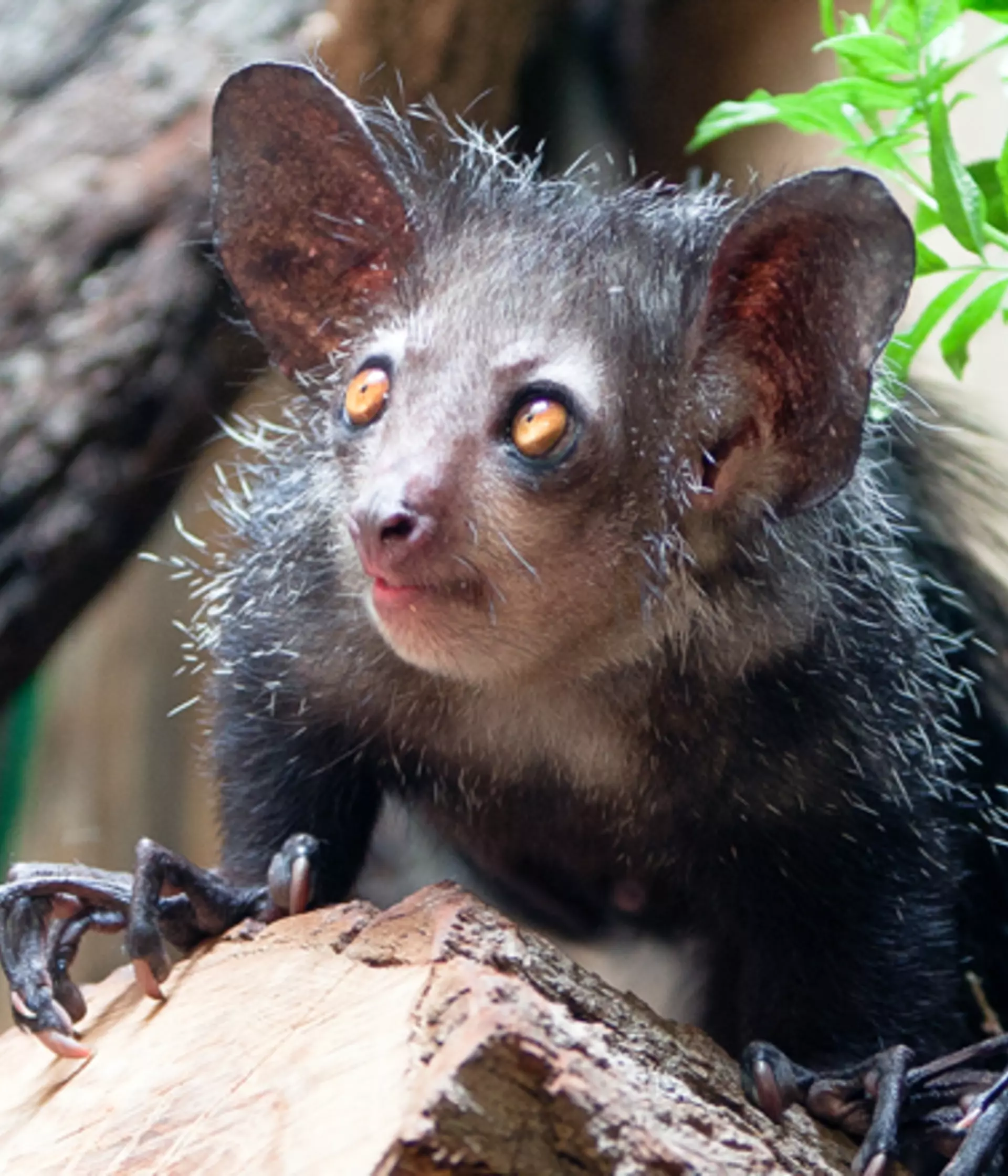Area of zoo
Pink zone
Enclosure status
Open
Population in the wild
Decreasing
IUCN status
Endangered
Scientific name
Daubentonia madagascariensis
Order
Primates
Type
Mammals
Family
Daubentonia madagascariensis
Region
Madagascar
Habitat
Tropical forest and rainforest
Aye-aye facts
- Aye-ayes find larvae to eat by tapping on branches and listening for hollow sounds, then they use their strong front teeth to rip open the bark before reaching into the hole to pull out their prey.
- In their Madagascan home, aye-ayes are believed to be omens of bad luck and even death to those who look at them. Legend has it that if an aye-aye points its long finger at you, death is not far away.
- Aye-ayes are the world's biggest nocturnal primate and the only nocturnal lemur.
What do aye-ayes look like?
The largest nocturnal primate, the aye-aye is a lemur with big eyes, ears and long clawed fingers.
Why do aye-ayes have a long finger?
Aye-ayes use their long, thin middle finger to forage for tasty beetle larvae from inside trees.
Where can I see an aye-aye at London Zoo?
Step out of Rainforest Life and down into our Night Life area. You'll discover nocturnal species that make the dark their home.
See an aye-aye at London Zoo
What do aye-ayes eat?
Insect larvae, fruit, nectar, fungi and seeds.
What threats do aye-ayes face?
Logging and farming are a risk to aye-aye habitats. They're also killed when they raid crops.
London Zoo Newsletter
Get the latest updates about exciting animal news from the Zoos, upcoming events, experiences, offers
